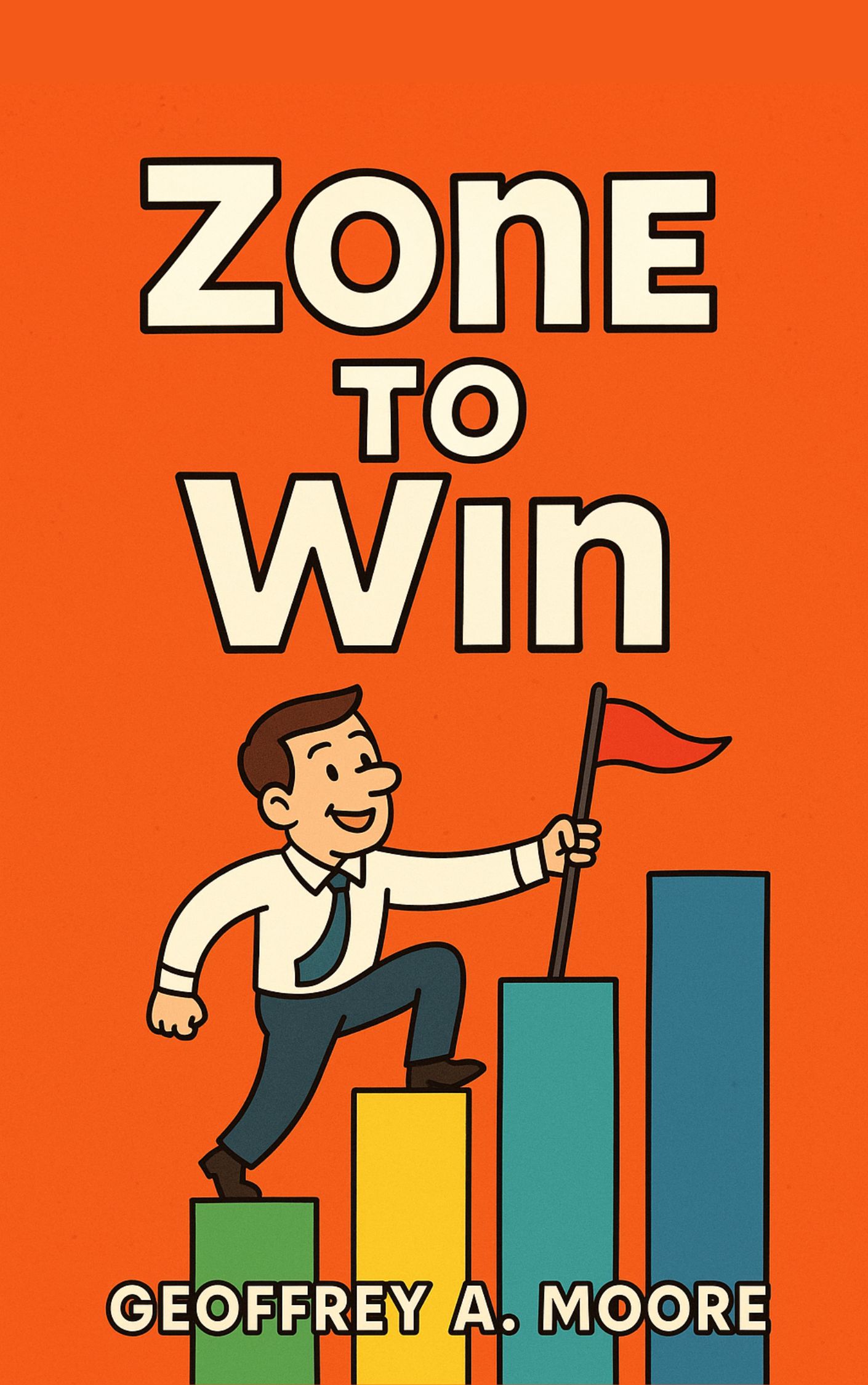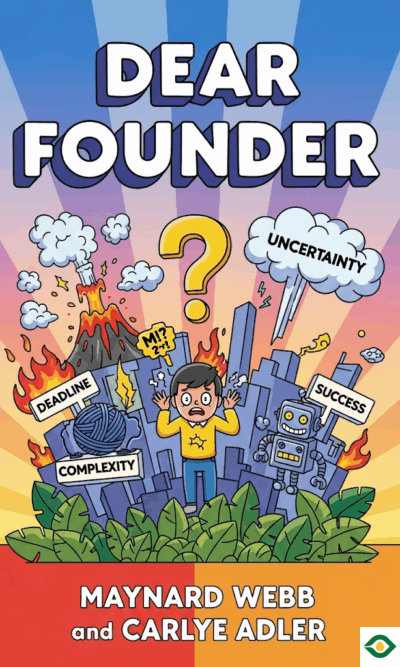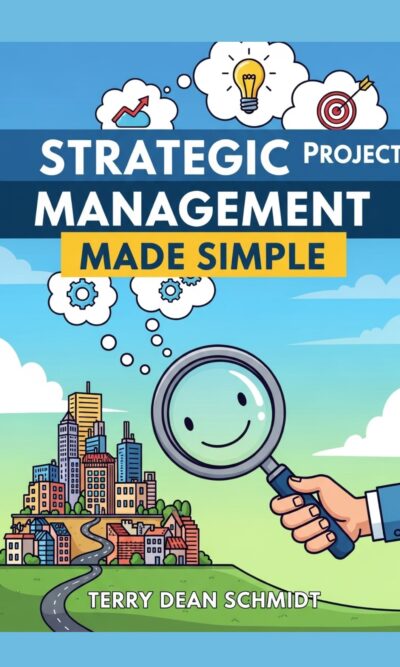Description
Disruption is a fact of life in modern business. New technologies, new competitors, and new ways of doing things constantly challenge established companies. Some businesses collapse under the pressure, while others find ways to reinvent themselves and thrive. Geoffrey Moore’s book Zone to Win offers a practical system to help organizations face disruption with confidence. His framework divides company activities into four zones. By understanding and balancing these zones, leaders can guide their businesses through uncertainty, protect their current strengths, and still explore the future.
The first thing to understand is that disruption is not rare. History shows that industries get shaken up regularly. The iPhone, for example, did not just change the mobile phone market—it forced airlines, music companies, retailers, and countless other industries to adjust. Customers began to expect mobile apps, digital services, and new levels of convenience. When one industry shifts, many others are pulled into the wave. Companies that act quickly to catch the wave of change can grow; those that miss it often struggle to recover.
Moore’s system proposes four distinct zones to organize company activity: the performance zone, the productivity zone, the incubation zone, and the transformation zone. Each zone serves a unique role, and together they provide balance between today’s operations and tomorrow’s opportunities.
The performance zone contains the people and teams who bring in direct revenue. These are the sales teams, the product managers, and anyone focused on delivering what customers currently buy. This zone is essential because it keeps the company alive in the present moment. Without strong performance, no organization can afford to look toward the future.
Next comes the productivity zone. This is where support work happens—functions like marketing, human resources, finance, and operations. These activities do not directly sell products, but they keep everything running smoothly. Efficiency and effectiveness are the focus here. Well-designed systems and temporary programs in this zone make sure the performance zone can do its work without chaos. For example, a company may run a temporary program to shift from CDs to digital music sales. Once the transition is complete, that program ends, but the productivity zone has enabled change.
The third zone is the incubation zone. This is where future growth takes shape. In incubation, companies test out bold, new ideas that might one day disrupt markets themselves. The incubation zone is not about small product improvements; it is about exploring entirely new opportunities. To qualify as worth pursuing, an idea should have the potential to increase company revenue by at least ten percent and bring in significantly more than the product it aims to replace. If it cannot meet those standards, it is likely not disruptive enough to justify the risk.
Finally, there is the transformation zone. This zone comes alive only during times of crisis—when another company’s disruption threatens your core business. Here, leadership must act quickly. The CEO, in particular, has to shift focus from daily management to crisis response. The task is to neutralize the threat by adopting the most important features of the disruptive competitor, optimize your own product, and then differentiate by offering something uniquely valuable. The transformation zone is a battlefield where survival depends on decisive action.
Balancing these four zones is not easy. A common tension arises between the performance zone and the incubation zone. On one hand, leaders want to keep revenue steady. On the other, they need to invest in innovations that might not pay off for years. The best strategy is to prioritize innovation most of the time, even if it causes short-term dips in performance. The payoff from successful disruption is usually worth it. However, when a competitor strikes first, priorities flip: survival takes center stage, and defending current customers becomes more important than pursuing new projects.
The productivity zone plays a quiet but powerful role in this balancing act. By designing efficient systems and temporary programs, productivity teams make sure resources can shift smoothly between performance and incubation efforts. For example, an “end of life” program may shut down old product lines and reassign staff to new initiatives. Though painful, this process helps companies stay relevant when disruption forces tough decisions.
The incubation zone requires more than just creativity. It also demands strategy. A new product needs champions—people who believe in it and can spread excitement. Early ambassadors and influential advocates help ensure a product’s chances of success. History shows that bold, disruptive products rarely succeed without visible supporters who can bring others on board. Once an idea proves viable, incubation shifts into development and finally into a full market release, with the goal of winning a dominant share quickly.
The transformation zone, though less frequently activated, is the ultimate test of leadership. When disruption hits, the CEO must set aside normal routines and focus all energy on guiding the company through crisis. Neutralize the disruption by adopting key features of the competitor’s product, optimize your offering by adding value, and then differentiate by creating something new that shifts the market once again.
Planning and preparation are crucial. Companies cannot improvise their way through disruption. Leaders must deliberately assign employees, resources, and budgets to each of the four zones. The performance and productivity zones need annual plans and budgets, while incubation requires flexible funding and governance. The transformation zone, in contrast, must be kept ready for emergencies—sometimes inactive, sometimes on alert, depending on market conditions.
Microsoft provides a powerful example of this system at work. The rise of mobile phones and competing operating systems threatened Windows, once Microsoft’s crown jewel. Under CEO Satya Nadella, Microsoft placed energy into its transformation zone. Instead of clinging stubbornly to the past, the company made Office available for free on iOS and Android, protecting its customer base. At the same time, incubation efforts focused on new innovations like the Bing search engine and cloud services. This combination of defense and forward thinking allowed Microsoft not only to survive but to stay highly relevant.
The big lesson from Zone to Win is that disruption does not have to spell doom for established companies. By managing the four zones wisely, leaders can keep their current business strong while preparing for the future. Disruption can be neutralized, new opportunities can be incubated, and transformation can turn crisis into growth.
In today’s business world, where change happens faster than ever, Moore’s framework offers a roadmap. It shows that discipline, organization, and boldness can help even large, established companies not just survive disruption but thrive in it.





